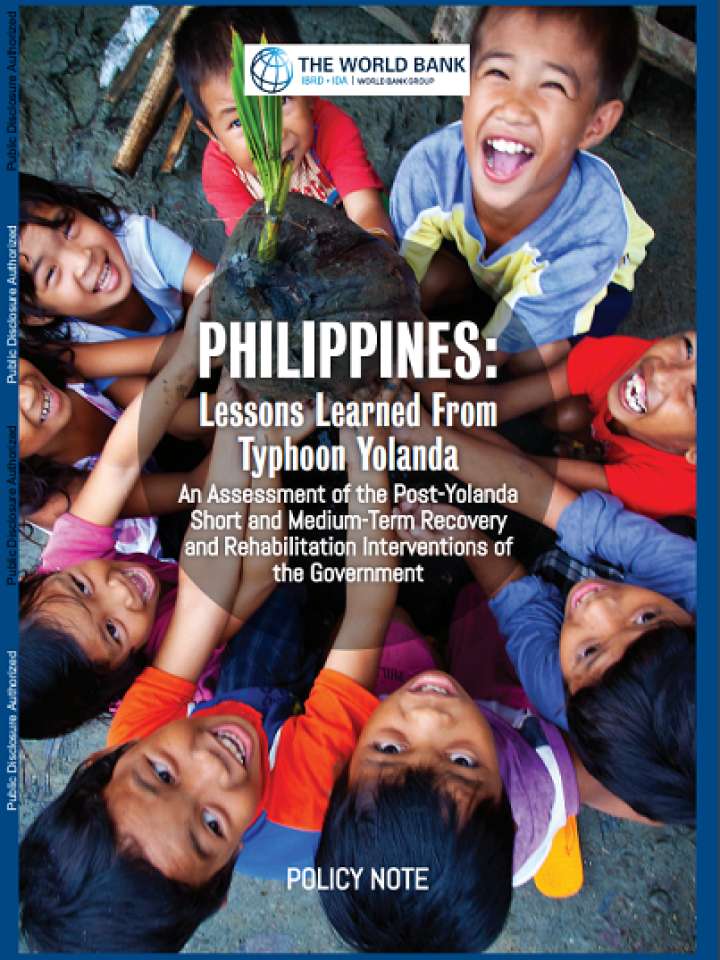Philippines: Lessons learned from Typhoon Yolanda: an assessment of the Post-Yolanda short and medium-term recovery and rehabilitation interventions of the government
The Philippines is increasingly exposed and vulnerable to natural hazards, which undermines poverty reduction and long-term growth. Typhoon Yolanda (Haiyan), which struck the Philippines in 2013, is considered the strongest typhoon1 ever to make landfall. Typhoon Yolanda has caused over 6,300 reported fatalities and an additional 2.3 million people were estimated to have fallen below the poverty line. The total damage and loss was estimated at PHP 571.1 billion (USD 12.9 billion) hampering economic growth by about 0.9 % in 2013, and another 0.3 % in 2014.2 Considering that Typhoon Yolanda was declared a level 3 category by the United Nations, it brought about several issues on the disaster governance aspect. The event highlighted the following major issues on the side of government and all other non-government actors: coordination at all levels, aid transparency and accountability, systems and protocols for donations and assistance, conduct of post-disaster needs assessment, recovery planning, implementation, monitoring, and communications.
In the aftermath of Yolanda, several donor-financed studies and assessments were undertaken on the response of government. However, the documentation is limited on certain areas where the donors were engaged in. Bits and pieces of post-disaster response and recovery recommendations were provided, but there was no consolidated assessment of the overall Post-Yolanda recovery efforts of government. Four years after Typhoon Yolanda, government emphasized the need to conduct an objective assessment of the overall post-disaster recovery and rehabilitation interventions. The Government of the Philippines (GoP) through the National Economic and Development Authority (NEDA) requested for strategic recommendations that are operational, practical and applicable at the national and sub-national level to address the recovery issues and bottlenecks and speed up implementation in future reconstruction efforts.
In response to the government’s request, the team conducted an assessment of specific aspects of the country’s short and medium-term recovery from the disaster. It was done through a review of official reports, studies and analytical work done by key government agencies, development partners and other stakeholders.
